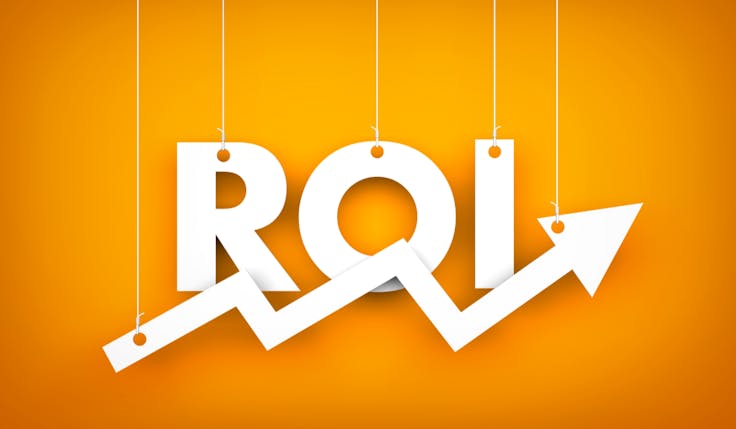Cannes-winning film ads ‘lack potential to drive long-term brand growth’
Comparing the award-winning campaigns against a database of 80,000 ads reveals that, in many cases, they were leaving viewers “utterly cold”, says System1 CMO Jon Evans.
 Nearly half of this year’s UK and US award-winning ads in the Cannes Lions film category show little potential to drive long-term brand growth, according to analysis by advertising effectiveness company System1, shared exclusively with Marketing Week.
Nearly half of this year’s UK and US award-winning ads in the Cannes Lions film category show little potential to drive long-term brand growth, according to analysis by advertising effectiveness company System1, shared exclusively with Marketing Week.
System1 tested the 23 award-winning ads from the UK and US against its database of over 80,000 ads. All ads in the database are awarded a ‘Star Rating’ between one and five, which reflects its potential to help long-term brand growth based on the emotional response of viewers.
In many cases, the awarded ads were leaving viewers “utterly cold”, the firm’s CMO Jon Evans says.
Of the 23 ads, 11 (or 48%) achieved just one star. A further six achieved two stars, while four reached three stars and just two reached four stars. None of the tested ads reached the top five star rating this year.
The overall mean score was 2.1 stars, slightly less than the average for ordinary TV and online video ads. This marks no change on last year’s average for Cannes-awarded film ads.
However, Evans says there is “reason to be hopeful”. Whereas in 2021 most of the better-scoring ads were in the lowest awards category – Bronze Lion – this year that trend has flipped, with Bronze Lions achieving a “poor” 1.6 star score on average, but Silver, Gold and Grand Prix work back up to an average of 2.4 stars.
While the overall average is still “too low”, there has been a “welcome shift in priority” towards work which did connect with ordinary viewers, Evans explains.

For example, Channel 4 won its third Grand Prix for its decade-long Paralympics marketing campaign, which returned for the Tokyo 2020 Paralympics last summer with the ad ‘Super.Human’. The ad also hit a “very good” 3.8 star score, the highest-scoring Film Grand Prix since 2018’s five star ‘It’s a Tide Ad’.
Like Super.Human, Mastercard’s Silver Lion winning ‘Spotlight’ ad also sought to include and represent those with disabilities, illustrating the world of sound a visually impaired woman uses to navigate her surroundings. Evans says the ad is “full of best practice for emotional ads”, with a “strong-lead character and a powerful emotional journey”. The ad scored 3.9 stars, one of the best scores of the group.
MGM Resorts’ Silver Lion winning ‘Joy’ – advertising its famous Bellagio Hotel in Las Vegas – also scored highly with 4.2 stars. This score was matched by Heinz’s Bronze Lion winning ‘Draw Ketchup’ ad. Another “simple idea brilliantly executed”, the ad focuses on Heinz’s distinctive brand assets, including its bottle and label shape, by demonstrating that when people are asked to draw ketchup, they draw Heinz.
“It manages to communicate the fact of Heinz’s dominance in the ketchup sector without coming over as arrogant. Distinctive assets are so important in modern, multi-channel branding and it’s great that Heinz recognises its value with such inventive wit,” Evans explains.
Finally, Evans highlights Twix’s ‘Camping’ ad for its use of humour, which he says is “one of the most effective techniques advertisers can use” and has seemingly “fallen from favour as a way to sell brands”. The ad lands a 3.2 star score to go alongside its Silver Lion.
However, elsewhere “bad old habits persisted”, Evans says. Among the one star Bronze award-winning ads was Coors’s ‘Vax, Wax and Chillax’ vaccination ad, which prioritised “style over feeling” and managed to “alienate” both pro- and anti-vaxxers alike, he explains.10 years of ‘Superhumans’: Inside Channel 4’s transformational Paralympics campaign
Similarly, one star ad ‘As Early As Five’ by Dove, which also won a Bronze Lion, “couldn’t convincingly point to a resolution” of the social issue it raised around race-based hair discrimination.
“There’s absolutely a place for challenging, experimental advertising which doesn’t compromise or care if it alienates viewers. Unless we push boundaries, the industry stagnates,” Evans says.
“But there’s a difference between an ad agency and a film school. Advertising is creativity with a business objective: it has to entertain for commercial gain.”
Evans adds that with spiralling prices currently taking their toll on consumers, these are the “most challenging times for brands in living memory”.
Pointing to recent news that the government plans to urge brands to slash marketing budgets to keep prices low, Evans says: “It’s never been more important to make the business and economic case for advertising, and that means putting effectiveness first.
“At Cannes 2022 I saw welcome examples of juries rewarding ads that truly resonate with people – ads with big, human ideas and beautiful execution. It’s a hopeful sign, but we have to move faster to prove we’re an industry that looks outward, not one that’s happy just to pat itself on the back.”
Similarly, speaking at the Cannes Lions festival this year, Procter & Gamble’s chief brand officer Marc Pritchard implored marketers to “double down” on their “core job” of using creativity to drive brand and business growth amid inflation and the rising cost of living.
“As we continue to face disruptions in the world around us, it may be more important than ever to double down on our core job, our collective priority and responsibility, and the superpower that no other industry has – creativity for growth,” Pritchard said.








Comments